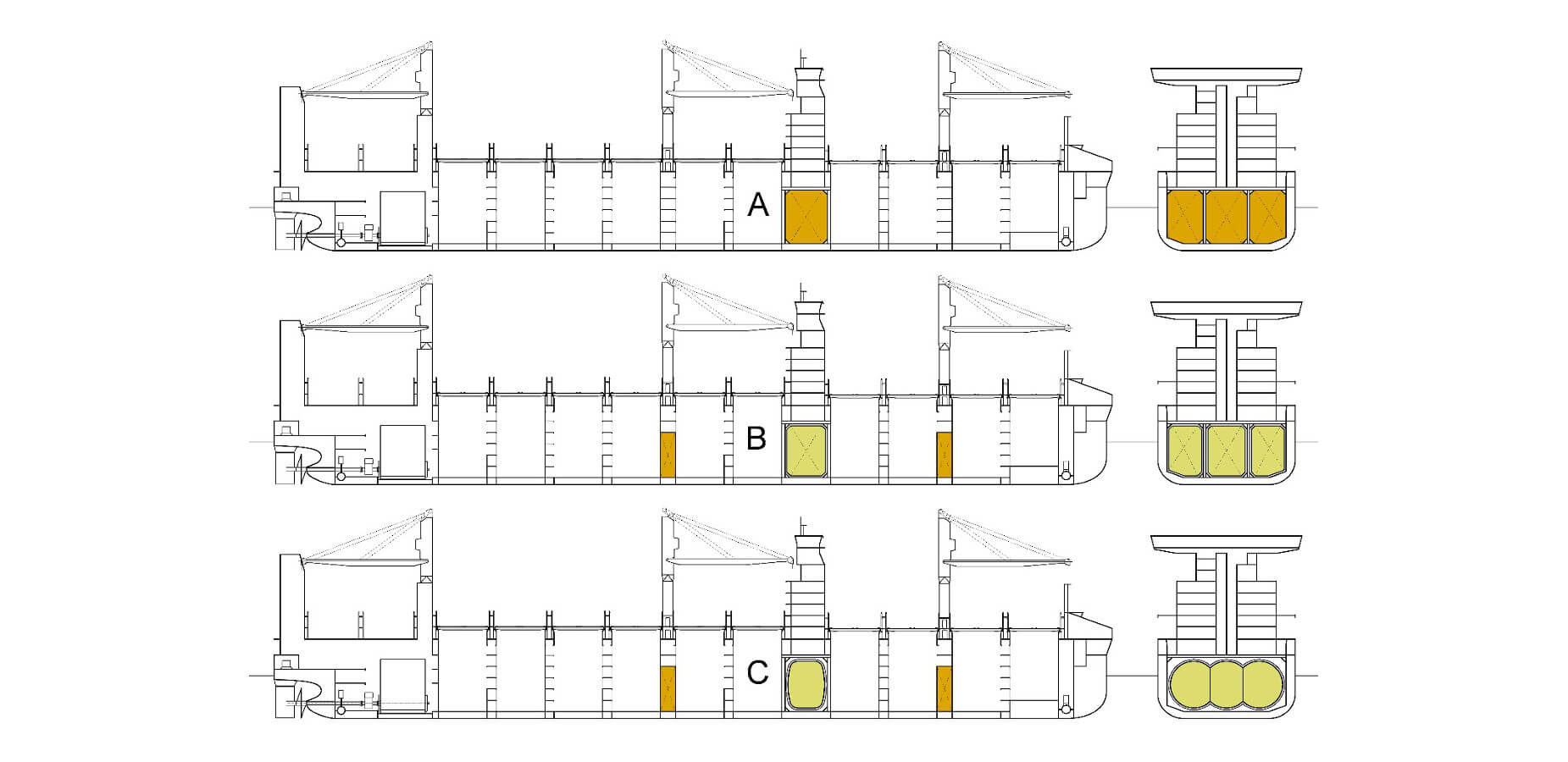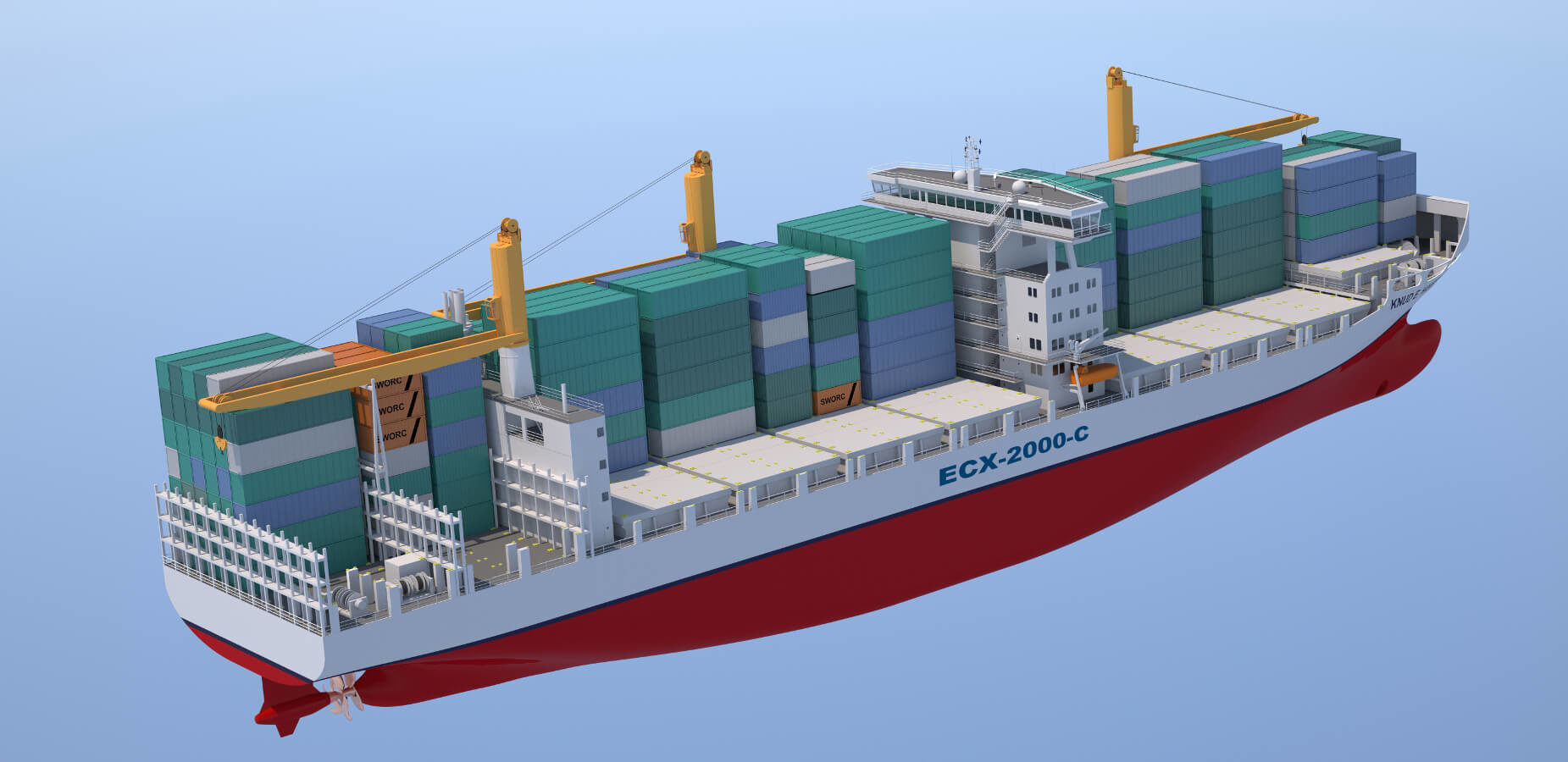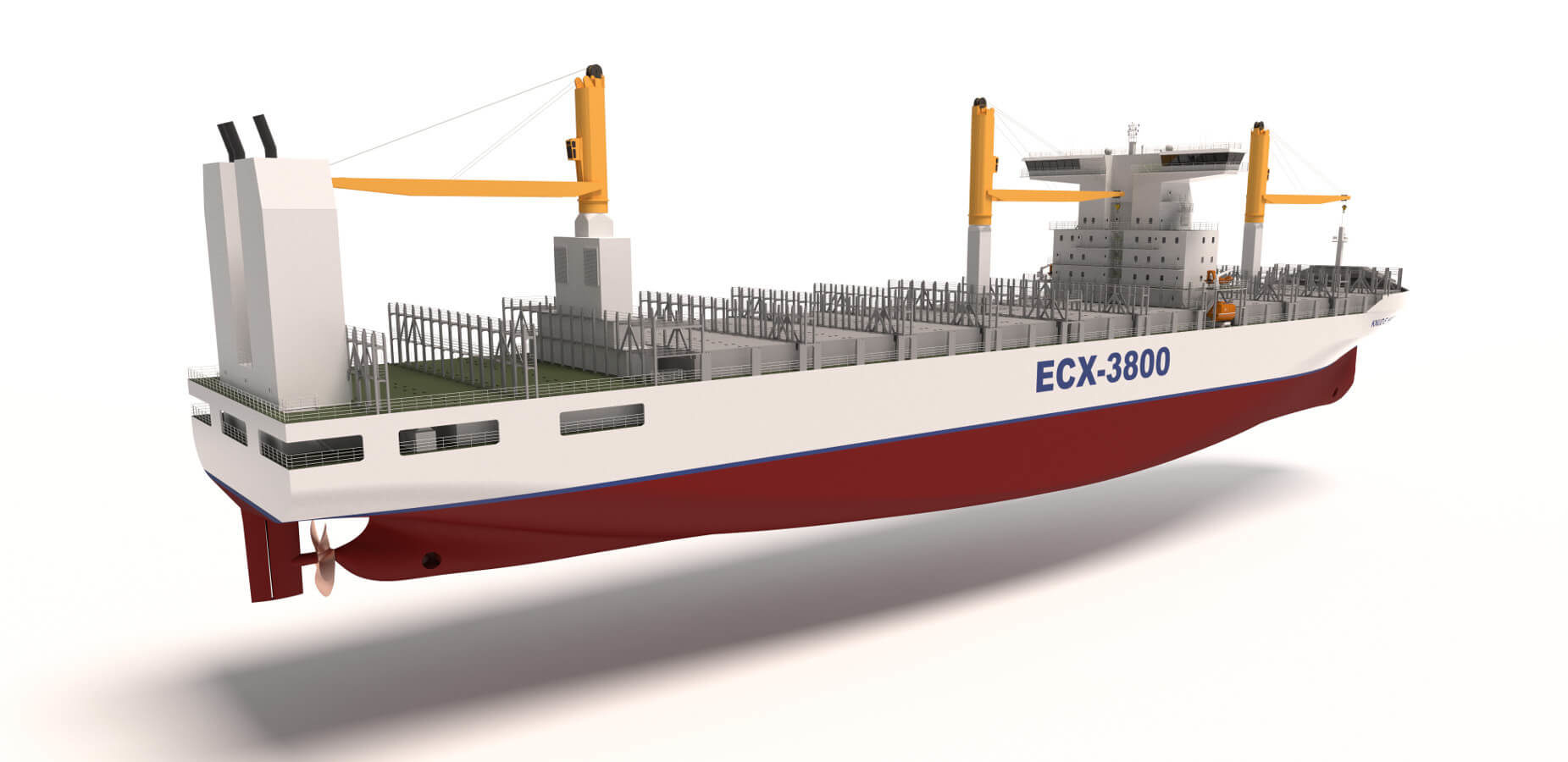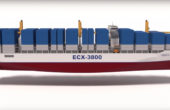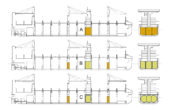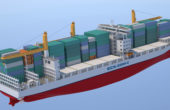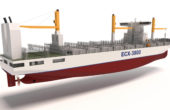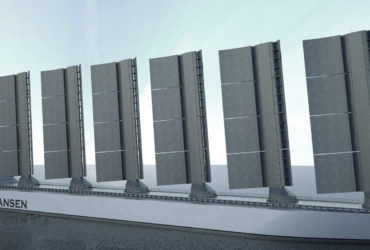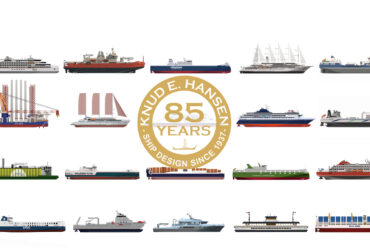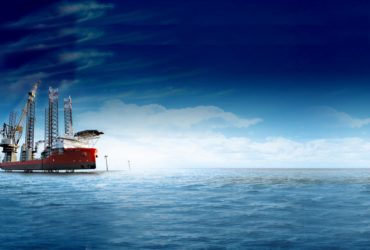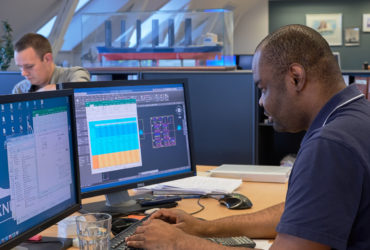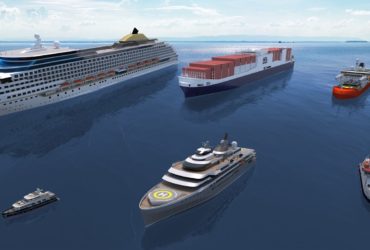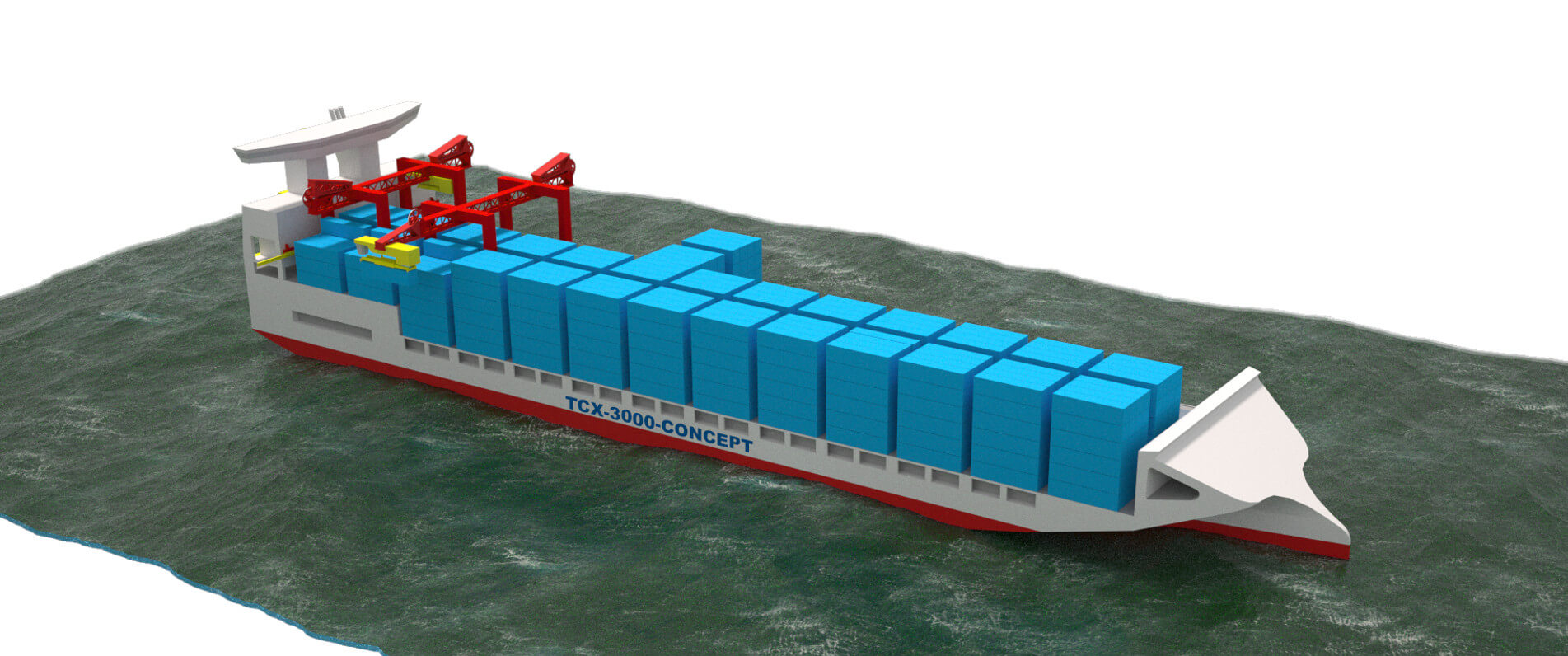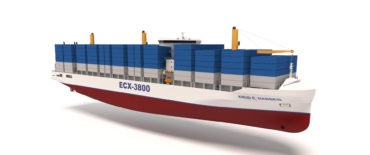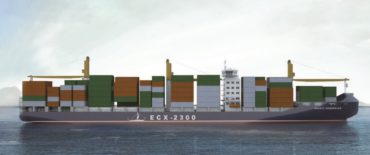19 May 2016
Three New Feeder Types to Challenge Modern Operational Circumstances
Article from Handy Shipping Guide
Whilst the world’s container shipping lines have been obsessing of late over ever larger vessels, Danish naval architect company KNUD E. HANSEN has recently been developing a number of pioneering container feeder vessel ideas. The three new ship designs were conceived with the idea of solving problems at specific locations, the first being a 2,000 TEU box vessel to call at small, narrow, up-river ports, for example the Port of Bangkok, Thailand.
Navigating such harbours requires a vessel to have a shallow draught, in the case of Bangkok, not more than 8.2 metres and to fulfil this, the vessel requires a relatively small diameter propeller. To cater for this without a loss of power, KNUD E. HANSEN’s designers presented a special propeller arrangement employing a directly driven main propeller with a diameter of 5.8 m and a counter-rotating Azipod with a 4.7 metre propeller. Jesper Kanstrup, Senior Naval Architect at KNUD E. HANSEN explained:
“The dual arrangement makes up for the relative small diameter of the propellers. The total propeller disk area of the two propellers corresponds to the area of a single propeller with a diameter of approx. 7.4 metres and further, the counter-rotating propeller will recover some of the swirl energy produced by the main propeller, which increases the overall efficiency.”
For the second design (watch the video below) draught was not such an important factor. The 3,800 TEU ship sees it fitted out with a larger diameter, slower-turning propeller, much cheaper than the dual prop arrangement. Unlike most feeder vessels, the deckhouse of this vessel is positioned slightly forward of amidships to maximize the number of container slots on deck and considering the IMO requirements to the line of vision from the bridge. The added number of slots can be utilised in real-life loading conditions because the vessel is wider and has a higher stability than most feeder vessels of this size. Kanstrup explains:
“This prepares the vessel for LNG and dual-fuel propulsion, attributes that are becoming increasingly sought after. Here, we have a square block below the deckhouse, in which we can either have HFO tanks or LNG tanks. What’s more, the vessel can be built with HFO tanks and easily retrofitted for LNG the day the infrastructure for LNG is sufficiently developed if a dual-fuel engine is installed in the first place.”
This second class is being developed in consultation with classification society DNVGL with the aim of achieving an Approval in Principle, whilst the final design witnesses the application of an innovative hull shape suited for carriage of both partial and full container loads. Problems frequently arise due to the differing ways in which a vessel behaves based upon its load. A large container vessel, when carrying few containers, offers shallow draught, but has so much stability that accelerations are too high, causing problems for the lashing gear and the crew. Kanstrup observes:
“In this situation, you don’t want anything more than sufficient stability and so a narrow hull is preferable. The problem being that, when you come to carrying a full load you require a wider water line for additional stability. So the ideal hull would have inclined hull sides with narrow water lines at shallow draught and wider water lines at deeper draughts, which, however, is not the most practical design considering the vertical quays in ports.”
The solution proposed by Hansen’s is that, instead of a conventional hull (A) you take a hull with inclined sides (B), but mirror the triangular sections in each side (C) to create a trimaran or as the company calls it a ‘stabilized mono-hull’ with a narrow main hull with vertical sides and outrigger hulls with a triangular cross section, but vertical sides towards the quay (D).
This produces the narrowness associated with low accelerations at partial load, and with the triangular section of the outrigger hulls, increased stability for full loads at deeper draught. The design features an open top section in the main hull, with 40ft containers stacked in a fixed cell guide system.
Because cell guides are not fitted outboard the main hull above the outriggers, the loading flexibility with regard to carrying 20, 45 and 48ft containers has been addressed.
Hansen’s believe that this design resolves an age old problem. Open top box vessels have been proposed before but would require a huge hull height to prevent water slopping inboard in rough weather which would result in a catastrophe such as that of the Spirit of Free Enterprise, which foundered when water entered via an open bow door. Such a deep hold would also slow loading and unloading of the cargo. Hansen says with a main narrow hull the sides of the open-top holds can be lower, and lower sides means faster container handling.
When the vessel is not heeling over, the sides barely touch the surface of the water, meaning little resistance. This ensures a vessel which can have a relatively high service speed while maintaining a reasonable fuel consumption per container, per nautical mile. Kanstrup concludes:
“We were looking for something that answers the slow steaming problem. With the advent of slow steaming, for certain goods, air freight has become a more popular choice as the cargo arrives faster. And moving goods from sea transport to air freight does not have a positive effect on the CO2 emission. With a design such as this we have a vessel that could bridge the gap between slow steaming container ships and air freight.”
Gallery
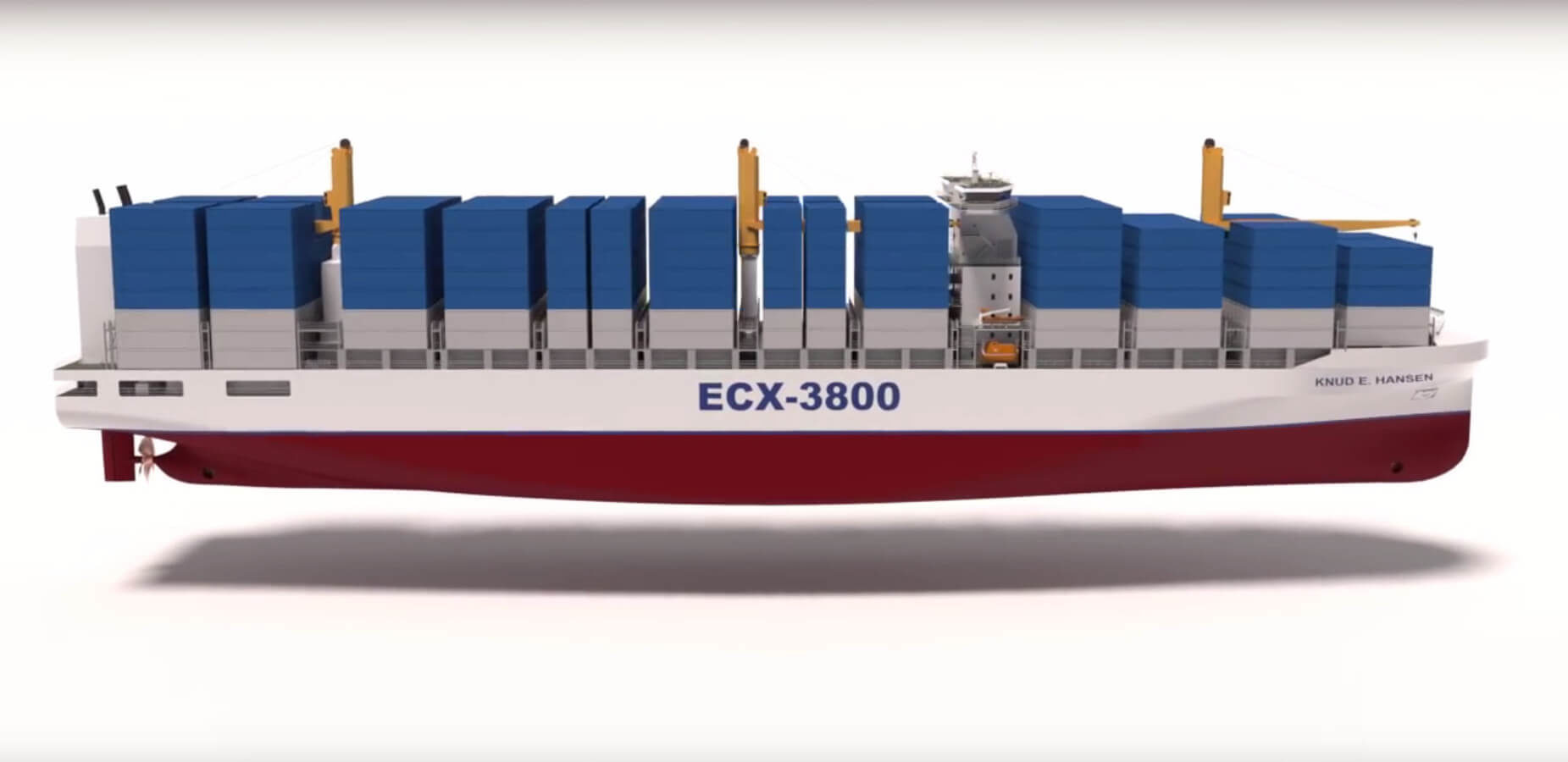
Watch the video about ECV-3800 Container Feeder KNUD E. HANSEN
